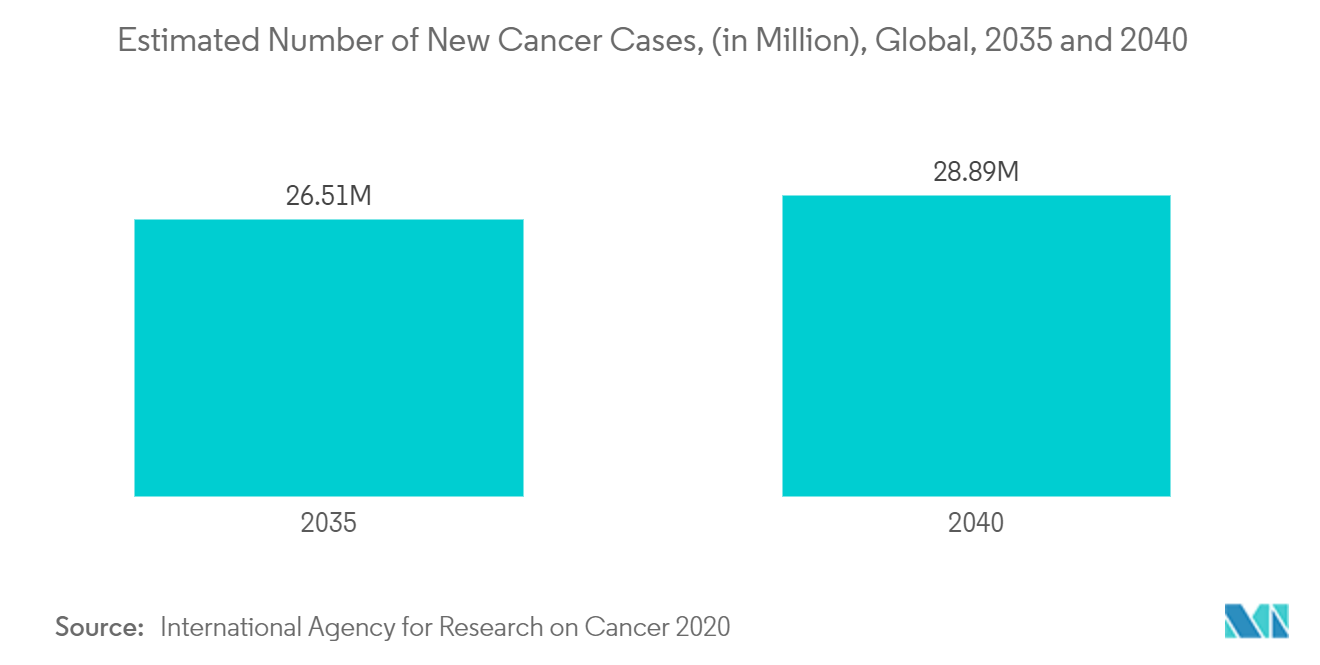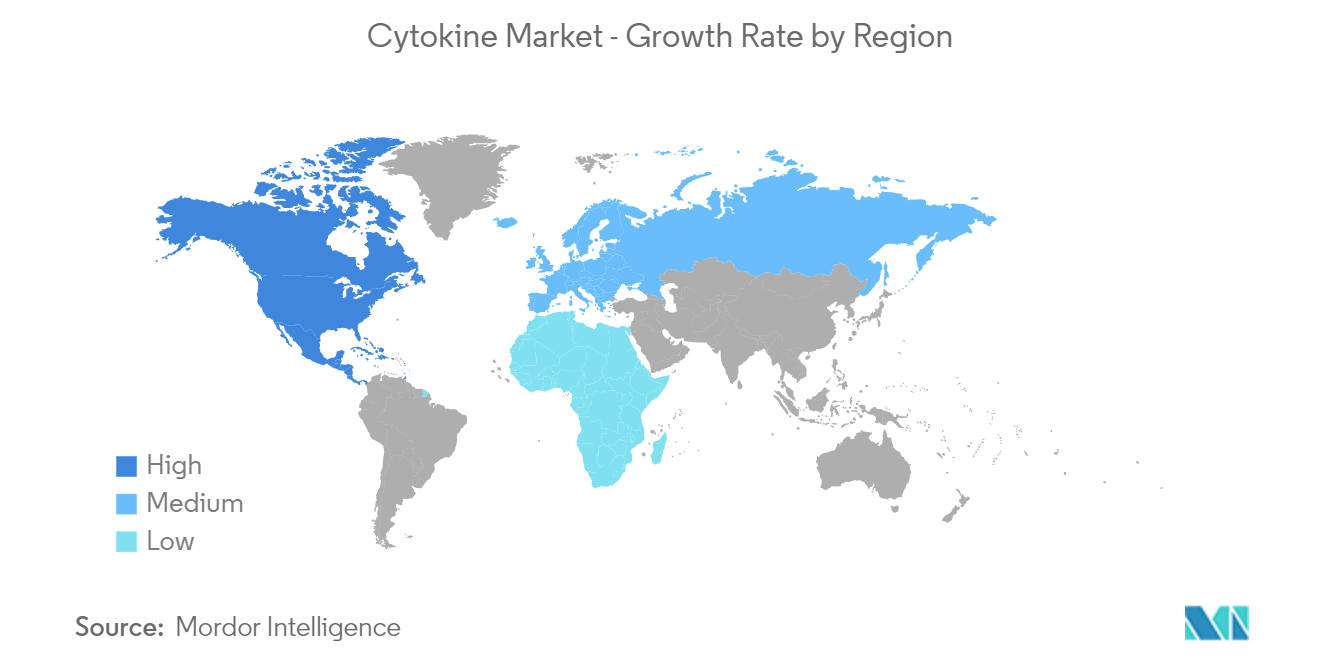Market Trends of Global Cytokine Industry
Cancer Segment is Expected to Hold the Largest Share of the Market Over the Forecast Period
The mixture of cytokines that are produced in the cancer microenvironment has an important role in cancer pathogenesis. Cytokines that are released in response to infection, inflammation, and immunity can function to inhibit cancer development and progression. Alternatively, cancer cells can respond to host-derived cytokines that promote growth, attenuate apoptosis, and facilitate invasion and metastasis. To circumvent these impediments, cytokines have been investigated clinically with new engineered cytokine mutants (superkines), chimeric antibody-cytokine fusion proteins (immunokines), anticancer vaccines, checkpoint inhibitors, and cancer-directed monoclonal antibodies to increase their antibody-dependent cellular cytotoxicity or sustain cellular responses and anticancer efficacy.
Factors such as the increased prevalence of cancer, research, and funding in the field of cancer therapy fuel market growth. For instance, as per the Globocan 2020, the number of new cancer cases reported was 19,292,789. This count is expected to rise to 28,887,940 by 2040. Moreover, the presence of competitors, product launches, collaborations, and pipeline assets and research boost market growth. For instance, in April 2022, Sonnet BioTherapeutics Holdings, Inc., a clinical-stage company developing targeted immunotherapeutic drugs, published their data from preclinical studies of the company's proprietary Fully-Human Albumin Binding candidates, SON-1010, SON-1210, and SON-1410, in a poster session at the American Association for Cancer Research (AACR) Annual Meeting 2022.
Hence, owing to the above-mentioned factors cancer application segment is expected to drive the segment growth over the forecast period.

North American Region Holds the Largest Market Share of the Cytokine Market
North America is anticipated to dominate the cytokine market, due to the rising prevalence of cancer, product launches, and research and development initiatives in the region. For instance, as per the report from Globocan 2020, in the United States, 2,556,022 people were affected with cancer and this figure is expected to rise to 3,316,283 by 2035. The rise in cancer cases is anticipated to boost market growth over the forecast period.
The presence of competitors, mergers, acquisitions and research funding in the studies region boost the market growth. For instance, in June 2022, California based- Amgen announced that the U.S. Food and Drug Administration (FDA) has approved RIABNI (rituximab-arrx), a biosimilar to Rituxan, in combination with methotrexate for adults with moderate to severely active rheumatoid arthritis (RA) who have had an inadequate response to one or more tumor necrosis factor (TNF) antagonist therapies. RIABNI is already approved for the treatment of adult patients with Non-Hodgkin's Lymphoma (NHL), Chronic Lymphocytic Leukemia (CLL), Granulomatosis with Polyangiitis (GPA) (also called Wegener's Granulomatosis) and Microscopic Polyangiitis (MPA). Moreover, in March 2022, Xenco, a clinical-stage biopharmaceutical company developing engineered antibodies and cytokines for the treatment of cancer and autoimmune diseases presented preclinical data from XmAb Cytokine Programs at the American Association for Cancer Research (AACR) Annual Meeting 2022. Thus increased studies and research related to cytokine amplify the market growth in the studied region.
Hence as per the factors mentioned above, North America is expected to witness growth over the forecast period.


